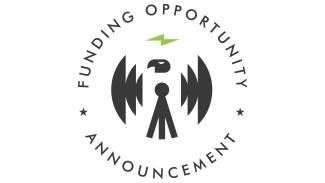WASHINGTON, D.C. — As part of President Biden’s Investing in America agenda, the U.S. Department of Energy’s (DOE) Office of Fossil Energy and Carbon Management (FECM) today announced up to $500 million available for projects that will help expand carbon dioxide (CO2) transportation infrastructure to help reduce CO2 emissions across the United States. Meeting the Biden-Harris Administration’s goal of a net-zero emissions economy by mid-century will require accelerating the responsible development and deployment of technology to capture CO2 emissions from industrial operations and power generation and to remove CO2 directly from the atmosphere. These efforts must be supported by a safe and reliable system that can transport the captured CO2, either for permanent geologic storage or for conversion to useful, durable products.
“To successfully achieve our climate goals, it is critical to ensure that we have adequate infrastructure in place to accommodate the growing volumes of carbon dioxide over the next 25 years that we must capture from industrial facilities, power plants and future direct air capture projects and then transport to geologic formations for permanent storage,” said Brad Crabtree, Assistant Secretary of Fossil Energy and Carbon Management. “Making investments in additional transportation capacity now allows us to plan ahead for future growth and take advantage of economies of scale, resulting in significant monetary and environmental benefits by avoiding unnecessary future construction of separate, redundant transport networks.”
America’s carbon transport system is already of significant scale—including multiple methods such as pipelines, trucks, and freight that together transport almost 60 million metric tons of CO2 per year. The United States will likely need to capture and permanently store approximately 400–1,800 million tonnes of CO2 annually to meet its net-zero commitments by 2050. To accommodate the rapid growth of carbon capture and storage industry, we must significantly expand the infrastructure to transport carbon dioxide over the next decade.
Carbon Dioxide Transportation Infrastructure Finance and Innovation Future Growth Grants
This funding opportunity announcement (FOA) will provide future growth grants under DOE’s Carbon Dioxide Transportation Infrastructure Finance and Innovation (CIFIA) program, made available through the Bipartisan Infrastructure Law. Future growth grants are intended to provide financial assistance for designing, developing, and building CO2 transport capacity up front that will then be available for future carbon capture and direct air capture facilities as they are developed and for additional CO2 storage and/or conversion sites as they come into operation.
Under this FOA, the transport system—which may include pipelines, rail, trucks, barges, and/or ships—must connect, either directly or indirectly, two or more CO2 emitting sources to one or more conversion sites or secure geologic storage facilities. DOE is interested in projects sited in different regions that will provide increased understanding of varying CO2 transport costs, transport modes, and transport network configurations, as well as technical, regulatory, and commercial considerations. This information will help inform DOE’s research and development strategy and to encourage commercial-scale deployment of carbon capture and storage and CO2 removal.
Read more details about this FOA here. All questions must be submitted through FedConnect; register here for an account. The application deadline is July 30, 2024 at 5:00 p.m. ET.
Societal Considerations and Impacts
In alignment with the Biden-Harris Administration’s commitment to advance environmental justice and equity, funding applicants must carefully address the societal considerations and impacts of their proposed projects, emphasizing early and active engagement with communities. Applicants must explain how projects are expected to deliver economic and environmental benefits and mitigate impacts; conduct community and stakeholder engagement; incorporate diversity, equity, inclusion, and accessibility; and promote workforce development and quality jobs. Projects selected under this opportunity will be required to develop and implement strategies to ensure strong community and worker benefits, and report on such activities and outcomes.
DOE’s Advancement of Carbon Dioxide Transport and Storage
Since January 2021, FECM has announced more than $842 million in project investments that advance research, development, and deployment of carbon transport and storage. This progress is essential to help drive economic development, technological innovation, and high-wage jobs as we build a clean energy and industrial economy.
FECM minimizes environmental and climate impacts of fossil fuels and industrial processes while working to achieve net-zero emissions across the U.S economy. Priority areas of technology work include carbon capture, carbon conversion, carbon dioxide removal, carbon dioxide transport and storage, hydrogen production with carbon management, methane emissions reduction, and critical minerals production. To learn more, visit the FECM website, sign up for FECM news announcements, and visit the National Energy Technology Laboratory website.




